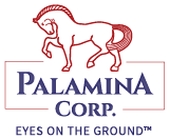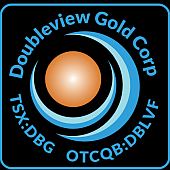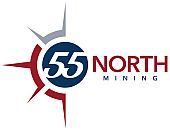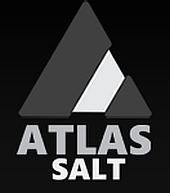 Headwater Gold survey maps fault corridor in Nevada
Headwater Gold survey maps fault corridor in Nevada
2025-11-03 13:31 ET – News Release
Mr. Caleb Stroup reports
HEADWATER GOLD GEOPHYSICAL SURVEY DELINEATES PROSPECTIVE FAULT CORRIDOR ON THE SPRING PEAK AND LODESTAR PROJECTS, NEVADA
Headwater Gold Inc. has released the results of a gravity geophysics survey completed on both its Spring Peak project and adjoining Lodestar project in Western Nevada. Exploration programs on both projects were financed through earn-in agreements with Newmont Corp. (New York Stock Exchange: NEM, Australian Securities Exchange: NEM, PNGX: NEM), originally announced on Aug. 16, 2022, and May 9, 2023, respectively.
Highlights:
- Untested potential: In the southern Spring Peak project area, a mapped fault known as the Bear fault hosts high-grade epithermal veins discovered by Headwater at the Disco zone. Beyond the drilled extend of the Disco zone, the Bear fault corridor remains untested by drilling, offering opportunities for potential blind discoveries akin to Nevada’s most recent tier-one discovery at AngloGold Ashanti’s Arthur project.
- Bear fault corridor revealed: Based on the gravity survey, Headwater geologists interpret the Bear fault as a major extensional structure spanning over 12 km — far beyond the previously known one km strike — much of it under thin, postmineral volcanic cover.
- Priority targets advanced: The Zodiac target on the Lodestar project and the Doug target at Spring Peak show strong structural alignment in the gravity data, with the Doug target showing a potential linkage with the Bear fault itself.
Caleb Stroup, president and chief executive officer of the company, states: “This gravity survey transforms our view of the Bear fault corridor, expanding it to district-scale proportions and highlighting kilometres of untested potential under shallow postmineral cover. We’ve gained critical insights into the 3-D structure that controls known gold mineralization in the camp and have targets identified for potential future exploration activities. This prospective corridor stands out across multiple data sets, boosting our confidence in pursuing blind targets to make the next big Nevada discovery.”
Spring Peak-Lodestar gravity survey
The gravity survey covers approximately 200 square kilometres with 2,336 ground stations at a nominal 400-metre spacing with 200-metre spacing over the core target area, successfully outlined major faults and basement blocks across the entire district. The survey was conducted by McGee Geophysical and MWH Geosurveys of Reno, Nev., and incorporated reprocessed USGS data using a 2.40 g/cc density model for the complete Bouguer anomaly.
The survey was effective at detecting density contrasts to map hidden geology beneath postmineral volcanic flows. The key finding, which the company considers highly significant, is a deep-seated fault system along the Bear fault corridor marked by sharp northeast-trending breaks in the total horizontal gradient with the structure extending from the Disco zone in the southwest to the Doug area in the northeast. Gravity data reveals the persistence of the fault system beneath thin postmineral volcanic flows, allowing Headwater to prioritize potential exploration activities for potential vein-hosting structures through cover.
Bear fault corridor in gravity data
The Bear fault is expressed as northeast-trending breaks bounding and dissecting kilometre-scale highs which are interpreted as basement blocks. Major gravity breaks are visually emphasized on the total horizontal gradient map, showing denser basement rocks northwest of the Bear fault versus less dense rhyolite domes on the southeast side. The northeast trend highlighted by the gravity survey is aligned with both the dominant vein orientation in the district and strong lineaments at surface, but the deep contrast indicates a major older structure reactivated beneath young cover, a geological setting widely viewed as prospective for epithermal systems.
Drilling to date has been limited to the southern end of the Bear fault corridor at the Disco zone, where high-grade veins occupy one fault zone that is revealed to be one among many defined by the gravity survey. The Doug target, with outcropping high-grade veins (announced March 15, 2025), is similarly situated, only on the northern end of Bear fault corridor. The Doug target is on a gravity break inboard of the edge of a major gravity high. Headwater interprets this setting as a subsidiary fault strand adjacent to a major fault bounding the basement gravity high on its southeast side.
Lodestar targets in gravity data
The top priority drill target on the Lodestar property is the Zodiac target, which features a prominent silicified and brecciated ridgeline capped by a silica sinter. The gravity survey reveals the Zodiac target is situated on a prominent northwest-trending gravity break which Headwater interprets as a significant deep-seated extensional fault. Veins and breccias mapped on surface at the Zodiac target are aligned with the gravity break and are similarly northwest trending. The interpreted fault represents a potential conduit and host for high-grade vein mineralization in an inferred boiling zone beneath the Zodiac sinter in a setting analogous to the Disco zone discovered by Headwater beneath the Spring Peak sinter 10 km to the south. An initial drill program totalling up to 3,500 metres comprising 10 to 15 holes to test the Zodiac target and other Lodestar targets is under way (see Headwater Oct. 14, 2025, news release).
Implications for exploration
Residual complete Bouguer anomalies tie the Disco, Doug and Zodiac targets to bounding faults at the margins of major gravity highs, typical of epithermal districts globally where mineralization is commonly focused along the edges of fault-bounded bedrock uplifts. This survey refines regional targeting along the Bear fault, illuminating blind opportunities under cover and guiding efficient, high-potential drilling in this prolific Nevada trend. Additional exploration programs are in progress to further resolve vein targets within the major structural corridors identified by the gravity survey. These follow-up programs continue to leverage the industry-leading technical expertise within Newmont to deploy deep-sensing geochemistry and high-resolution ground-based geophysical techniques to explore through cover.
About the Spring Peak project
The Spring Peak project is located in the Aurora mining district in the Walker Lane belt, west-central Nevada, approximately 50 km southwest of the town of Hawthorne. The project adjoins Hecla Mining Company’s past-producing Aurora mine complex, where existing infrastructure includes a 600-ton-per-day mill, several production water wells and high-voltage three-phase power. Recent drilling at the Disco zone has confirmed the presence of high-grade gold mineralization, including significant intersections such as 15.92 grams per tonne Au over 2.38 m and 10.43 g/t Au over 2.01 m within a broader zone of 2.73 g/t Au over 34.72 m. The Spring Peak project has been selected by the U.S. federal government for the FAST-41 permitting program, which a federal initiative designed to streamline approvals for vital infrastructure, ensuring that designated mining projects move through an efficient review and authorization process. An exploration plan of operations has been submitted to the U.S. Forest Service proposing up to 266 potential additional drill sites to further explore for extensions of known mineralization and test additional targets within the land package. Headwater holds an option to acquire a 100-per-cent undivided interest in the Spring Peak project from Orogen Royalties (TSX Venture Exchange: OGN), subject to retained royalties and subject to Newmont’s option to acquire up to 75 per cent of the project following certain expenditures and preparation of a prefeasibility study within a designated time frame. On Sept. 26, 2025, the company announced that Newmont has elected to advance to stage 2 of the Spring Peak earn-in agreement, whereby they have the opportunity to increase their interest in the project from 51 per cent to 65 per cent by funding exploration expenditures of $40-million (U.S.) over a three-year period.
About the Lodestar project
The Lodestar project is located approximately 10 km north of the company’s Spring Peak project in the Aurora mining district and adjoins Hecla’s past-producing Aurora mine complex to the south. Silica sinter exposures and other high-level epithermal alteration features at Lodestar are geologically analogous to the Spring Peak project and suggest the potential for preservation of undiscovered high-grade epithermal veins at depth. Headwater has initiated the first significant exploration program on the property since 1988.
Headwater holds an option to acquire a 100-per-cent undivided interest in the Lodestar project from a private vendor, subject to retained royalties and Newmont’s option to acquire up to 75 per cent of the project following certain expenditures and preparation of a prefeasibility study within a designated time frame.
About Headwater Gold Inc.
Headwater Gold is a technically driven mineral exploration company focused on the exploration and discovery of high-grade precious metal deposits in the Western United States. Headwater is aggressively exploring one of the most well-endowed and mining-friendly jurisdictions in the world with a goal of making world-class precious metal discoveries. Headwater has a large portfolio of epithermal vein exploration projects and a technical team of experienced geologists with diverse capital markets, junior and major mining company backgrounds.
The company is systematically drill testing several projects in Nevada and in August, 2022, and May, 2023, announced significant transactions with Newmont where it acquired a 9.9-per-cent strategic equity interest in the company and entered into earn-in agreements on several of Headwater’s projects, including Spring Peak and Lodestar which continue under partnership. In September, 2024, Centerra Gold Inc. acquired a strategic 9.9-per-cent interest in the company through a non-brokered private placement.
Headwater is part of the NewQuest Capital Group which is a discovery-driven investment enterprise that builds value through the incubation and financing of mineral projects and companies.
Qualified person
The technical information contained in this news release has been reviewed and approved by Gregory Dering, PhD, PGeo (AIPG CPG-12298), a qualified person (QP) as defined in National Instrument 43-101 — Standards of Disclosure for Mineral Projects. Dr. Dering is not independent by reason of being the company’s vice-president of exploration.
We seek Safe Harbor.
































